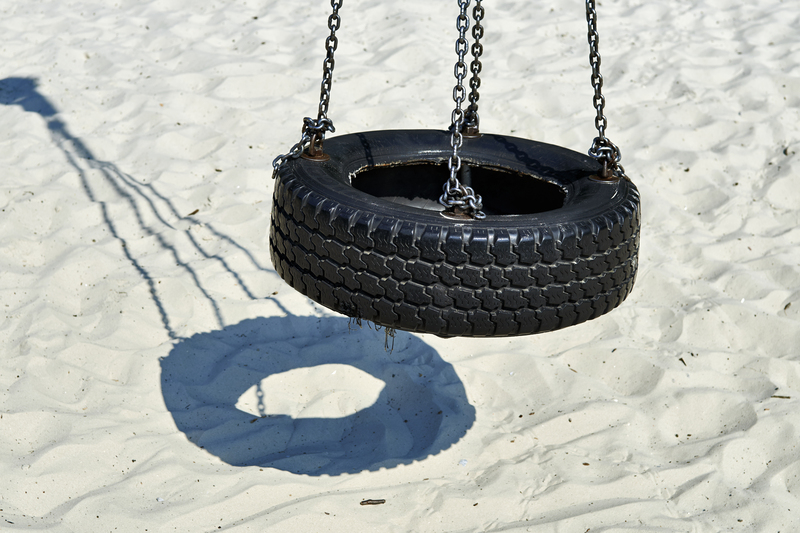Exploring Solutions to Halt Microplastic Pollution
Microplastic contamination has become a burgeoning environmental crisis, posing a significant threat to marine life, terrestrial ecosystems, and even human health. As awareness about these minuscule but dangerous plastic particles grows, the world is seeking effective microplastic pollution solutions to address and mitigate this urgent issue. This comprehensive article delves deep into the origins, impacts, and--most importantly--the potential strategies to halt microplastic pollution, offering insights for individuals, industries, and policymakers alike.
Understanding Microplastic Pollution: Origins and Impact
Microplastics are tiny plastic fragments, typically less than 5 millimeters in size. They originate from a variety of sources, including the breakdown of larger plastic debris, synthetic fibers from clothing, and microbeads in personal care products. Their widespread presence is now detected in oceans, rivers, soil, the air, and even human bodies.
- Primary microplastics - manufactured to be microscopic e.g., microbeads in cosmetics.
- Secondary microplastics - result from the degradation of larger plastic items such as bottles, bags, and fishing gear.
Why Are Microplastics a Problem?
The threat posed by microplastic pollution is multifaceted:
- Ecological harm: Marine animals mistake microplastics for food, leading to ingestion and bioaccumulation in the food chain.
- Human health risk: Microplastics have been found in drinking water, table salt, air, and even human blood, raising concerns about their potential toxicity.
- Ecosystem disruption: The persistence of microplastics interferes with soil health, water quality, and the integrity of aquatic and terrestrial ecosystems.

A Multi-Faceted Approach: Strategies to Stop Microplastic Pollution
Combating microplastic pollution requires a holistic and collaborative approach, integrating policy changes, technological innovations, industrial responsibility, and personal lifestyle adjustments. Here, we explore the most promising solutions for microplastic pollution mitigation that the world must embrace.
1. Reducing Plastic Production and Consumption
Prevention is the most effective cure when it comes to halting microplastic pollution. Minimizing plastic usage and waste halts microplastics generation at its source.
- Ban single-use plastics: Legislation at national and international levels can phase out items like plastic bags, straws, and cutlery.
- Promote alternatives: Encourage the adoption of reusable, biodegradable, or compostable materials in place of conventional plastics.
- Consumer awareness: Education campaigns can push people to make informed choices, reducing unnecessary plastic consumption.
2. Innovations in Plastic Manufacturing and Design
Redesigning products so they shed fewer microplastics and using safer alternatives is critical. Some notable approaches include:
- Developing bioplastics: Research and scale the usage of plastics based on renewable resources that decompose harmlessly.
- Improved product design: Manufacturers can switch to materials and textile fibers less prone to shedding microplastics (e.g., tightly woven fabrics).
- Product labeling: Clear indications of microplastic content help consumers make better choices.
3. Advanced Filtration and Wastewater Treatment Technologies
Microplastics frequently enter waterways through domestic and industrial wastewater. While traditional water treatment processes remove many contaminants, they are not always effective for microplastics. Modern solutions include:
- Upgraded filtration systems: Installing finer filters and membrane technologies in treatment plants can dramatically reduce microplastic discharge.
- Microfiber catchers: Washing machines equipped with microfiber filters intercept shed fibers before they leave the home.
- Retrofitting existing infrastructure: Governments can support upgrades to municipal water treatment facilities with microplastic-capturing technology.
4. Bioremediation and Clean-Up Initiatives
Bioremediation leverages naturally occurring organisms to break down pollutants. Recent research into specialized bacteria and fungi capable of digesting plastics offers hope for reducing microplastic concentrations in the environment.
- Plastic-eating microbes: Innovative studies suggest certain microorganisms can accelerate the breakdown of microplastics.
- Beach and waterway cleanups: Community-driven efforts, supported by NGOs and governments, directly reduce microplastic presence in sensitive areas through organized collection and removal activities.
- Ocean-cleanup technologies: Devices such as floating booms and autonomous collectors help gather floating plastic debris before it disintegrates into microplastics.
5. Regulatory Measures and Policy Action
Policymakers and international governing bodies have a crucial role in enforcing regulations to mitigate microplastic contamination.
- Banning microbeads: Several countries have already enacted legislation to prohibit microbeads in personal care products, a major source of microplastics.
- Producer responsibility: Extended Producer Responsibility (EPR) programs require manufacturers to manage the lifecycle impact of their plastic products, incentivizing eco-friendly design and recycling initiatives.
- Standard setting: Establishing benchmarks for permissible microplastic content in products, wastewater, and emissions.
The Role of Research and Innovation
Scientific research underpins every major advance in the fight against microplastic pollution. Emerging solutions and technologies rely on ongoing study and data-driven policy decisions:
- Developing detection methods: Improved analytical tools make it easier to measure and monitor microplastic concentrations in different environments.
- Studying health impacts: Multidisciplinary teams are exploring the pathways and biological effects of microplastics in humans and wildlife.
- Innovative removal solutions: New materials, devices, and biological agents open up possibilities for large-scale microplastic collection and degradation.
Collaborative Projects and Citizen Science
Universities, NGOs, and grassroots organizations are increasingly involving citizens in microplastic research and cleanup efforts. Through training and awareness programs, individuals can collect samples, document findings, and contribute data to global databases, bridging the gap between scientific research and community action.
What Individuals Can Do to Prevent Microplastic Pollution
The fight against microplastic contamination isn't limited to governments and corporations. Every person has a part to play. Here are practical ways individuals can minimize their microplastic footprint:
- Reduce synthetic clothing purchases: Wash synthetic fabrics less frequently and at lower temperatures to minimize fiber shedding.
- Choose natural products: Opt for natural fiber clothing (cotton, wool, hemp) and microbead-free personal care items.
- Support plastic reduction policies: Engage with policymakers and support legislation that targets plastic waste and microplastics.
- Proper recycling: Be diligent about sorting and recycling plastics to prevent environmental leakage.
- Participate in cleanups: Join or organize local river, beach, or park cleanups to reduce visible plastic litter.
Industry's Responsibility and Opportunities
Corporate actors bear significant responsibility for both the creation and solution of microplastic pollution. There is an urgent need for businesses to:
- Redesign supply chains: Shift toward sustainable materials and reduce single-use plastic dependence.
- Invest in green technology: Fund research, development, and deployment of microplastic filtration systems and alternative products.
- Embrace transparency: Disclose plastic usage and microplastic emissions, setting measurable reduction targets.
- Educate consumers: Inform buyers about product impacts and greener alternatives.
By adopting these measures, companies can position themselves as sustainability leaders and help push the market toward a microplastic-free future.
Global Initiatives and Partnerships
Here are some major international efforts aimed at tackling microplastic contamination:
- The United Nations Environment Programme (UNEP): Supports global plastic agreements, knowledge sharing, and capacity-building among nations.
- International Coastal Cleanup: A worldwide event mobilizing millions to remove plastics from shorelines, preventing further microplastic generation.
- Microplastic research consortia: Collaborative groups of scientists, governments, and NGOs working across borders to develop and implement effective solutions for microplastic pollution.
- Legislative cooperation: Europe's ban on certain single-use plastics sets a benchmark for other regions to follow.

Challenges and Future Directions
While progress is being made, overcoming microplastic contamination presents several enduring challenges:
- Scale and complexity: Microplastics are ubiquitous and persistent, making complete removal difficult.
- Lack of standardized regulations: Different countries have different rules about plastics, leading to inconsistent action.
- Knowledge gaps: More research is needed on the long-term health impacts and the best removal technologies.
- Economic barriers: Upgrading infrastructure and switching to alternative materials can be costly, particularly for developing countries.
Nevertheless, innovation continues apace. With increased investment in research, greater public awareness, and decisive policy action, it's possible to envision a future where microplastic pollution is dramatically reduced.
Conclusion: A Collective Responsibility to Halt Microplastic Pollution
Halting microplastic pollution demands a united global response--from everyday consumers to multinational corporations and world governments. Every action--from redesigning products and upgrading water infrastructure to supporting green policies and changing individual habits--can make an impact. By leveraging technology, regulation, community action, and continued research, we can protect the environment and future generations from the pervasive threat of microplastics.
The time for action is now. Only by working together can we embrace the solutions needed to halt microplastic pollution and secure a cleaner, healthier planet.